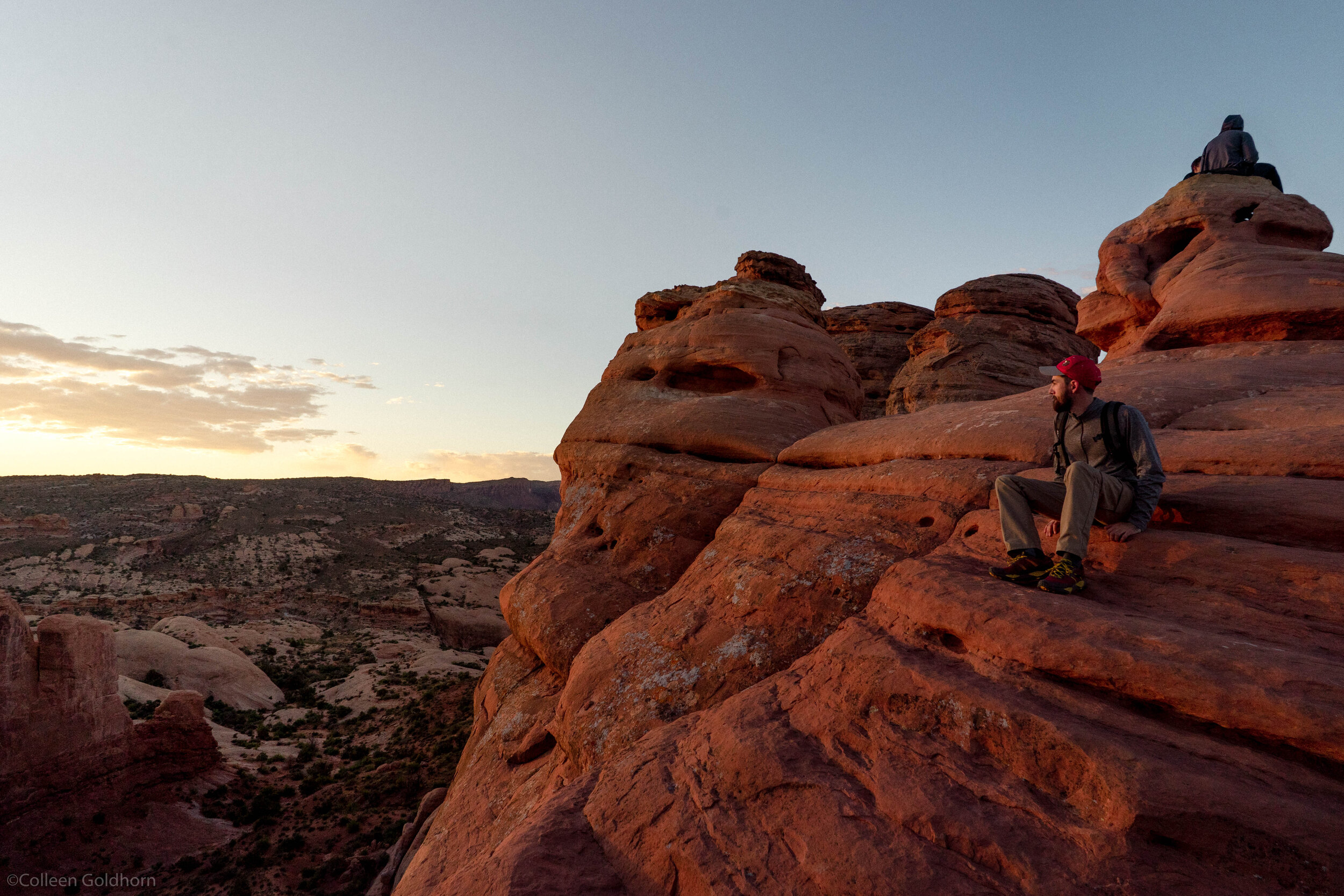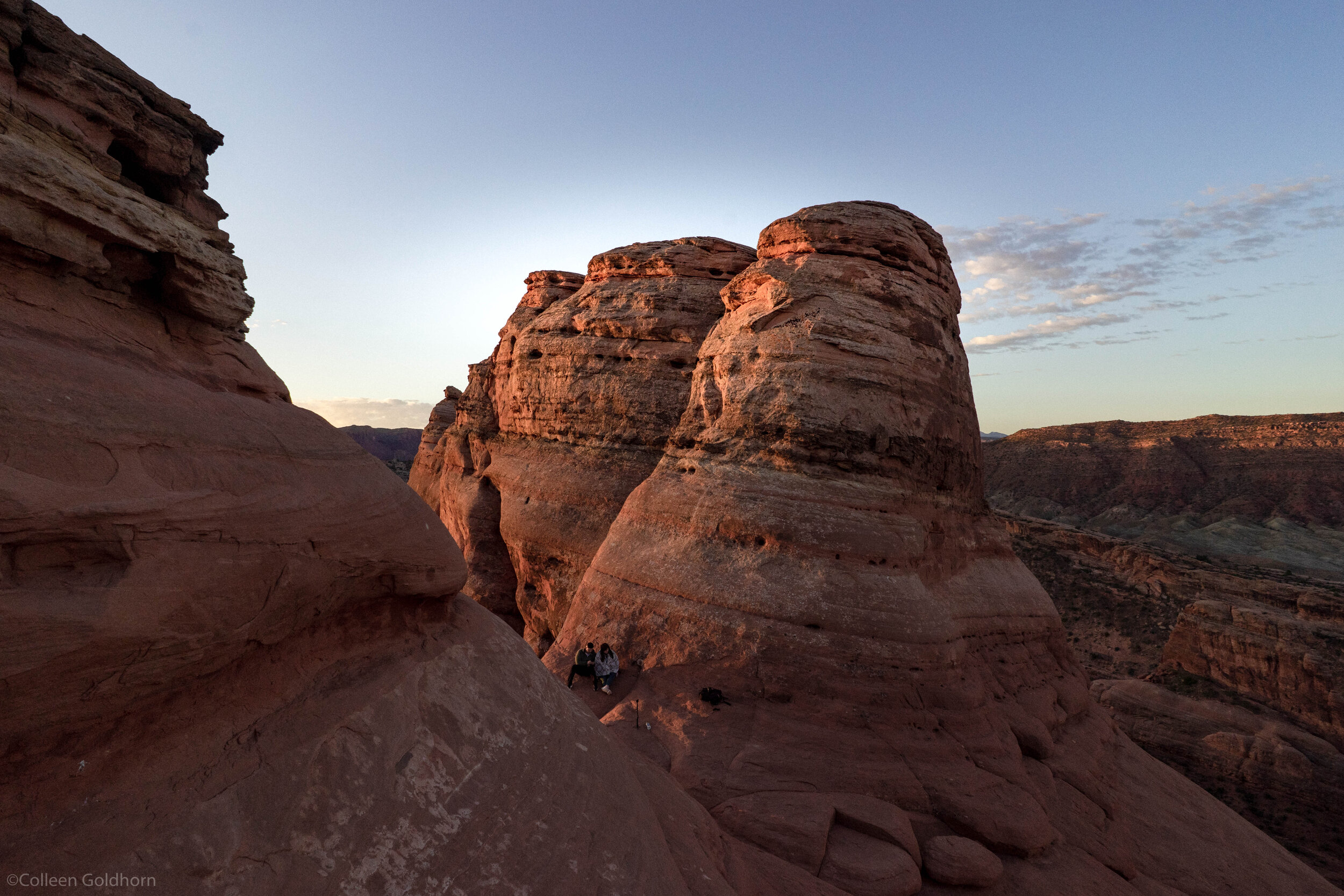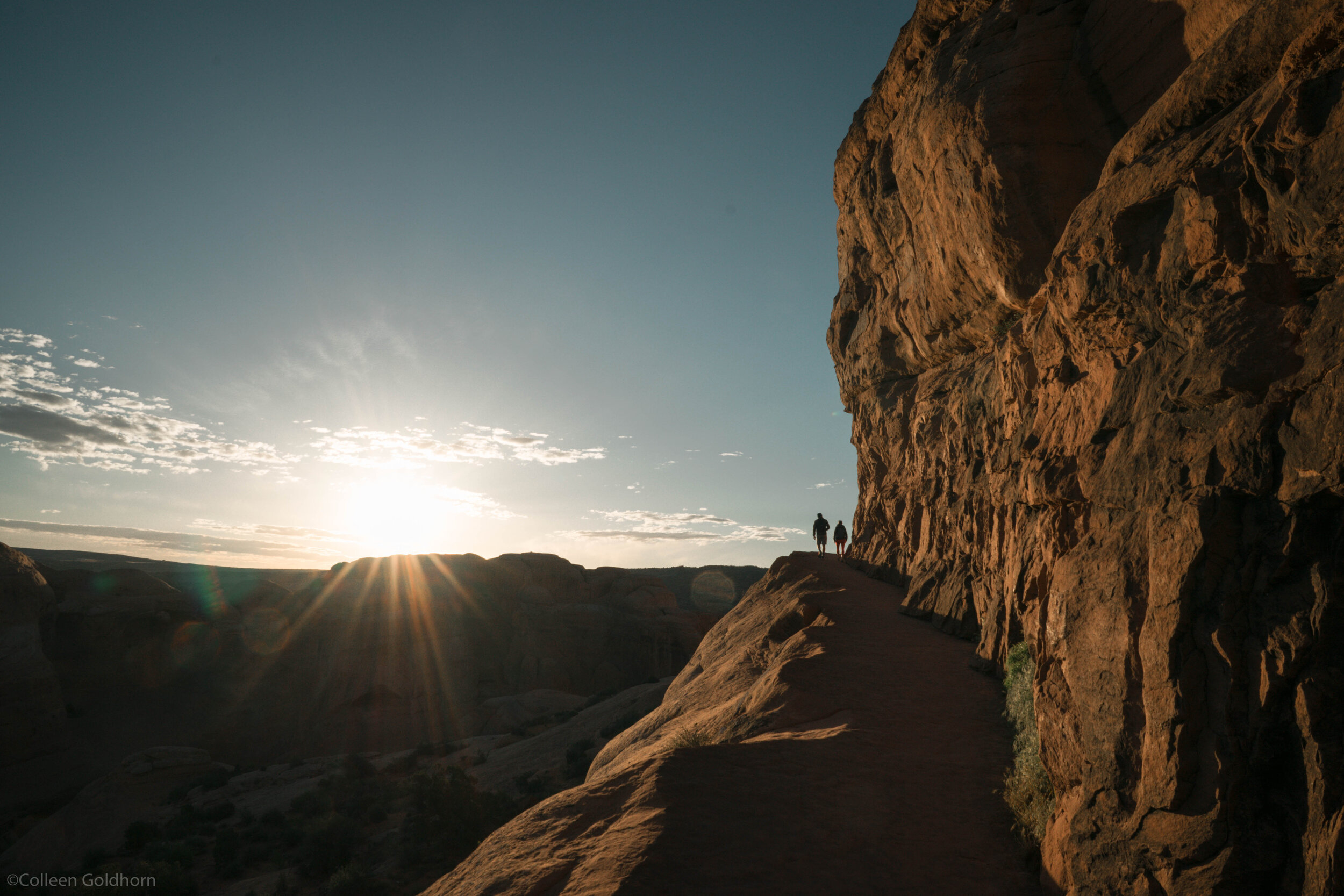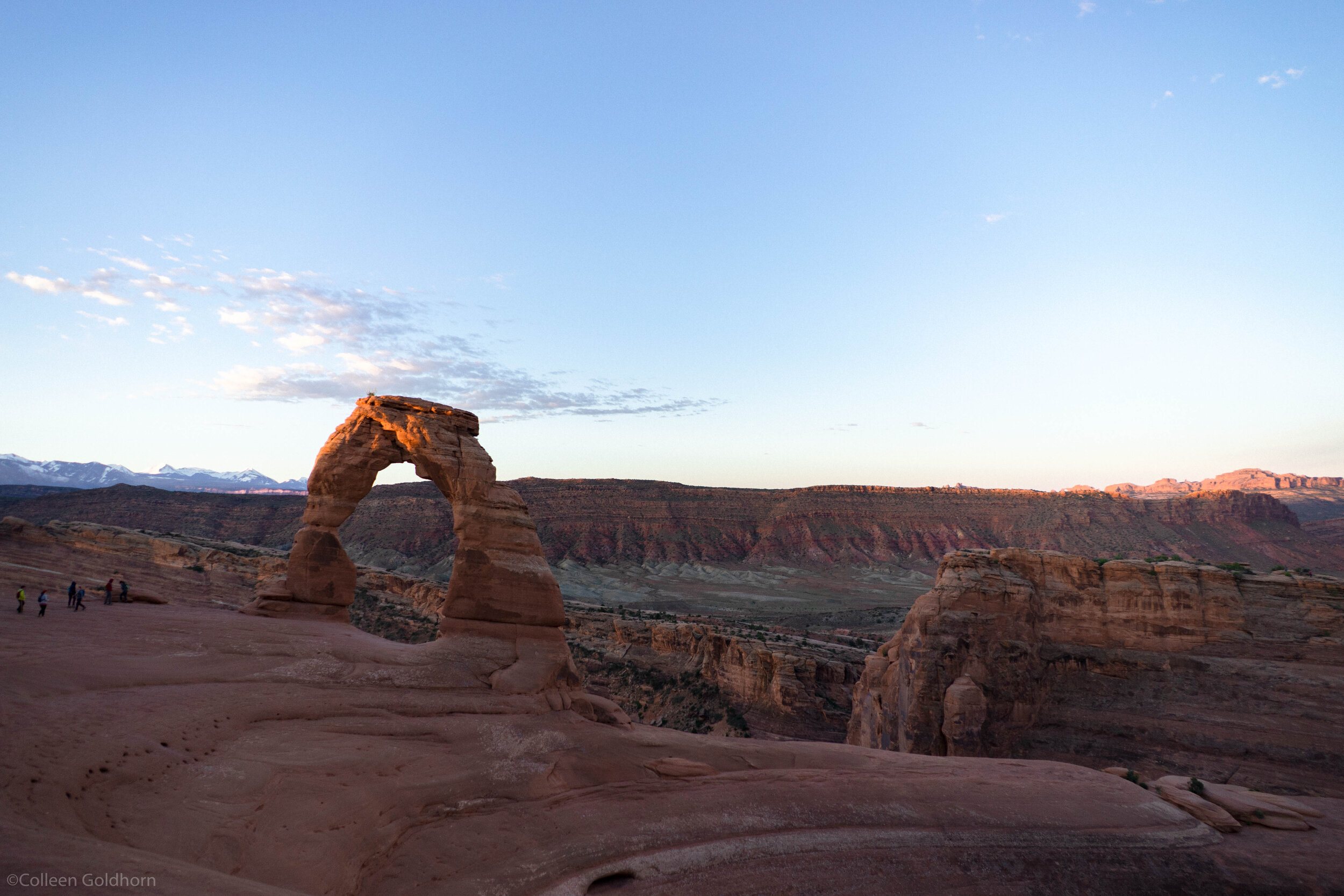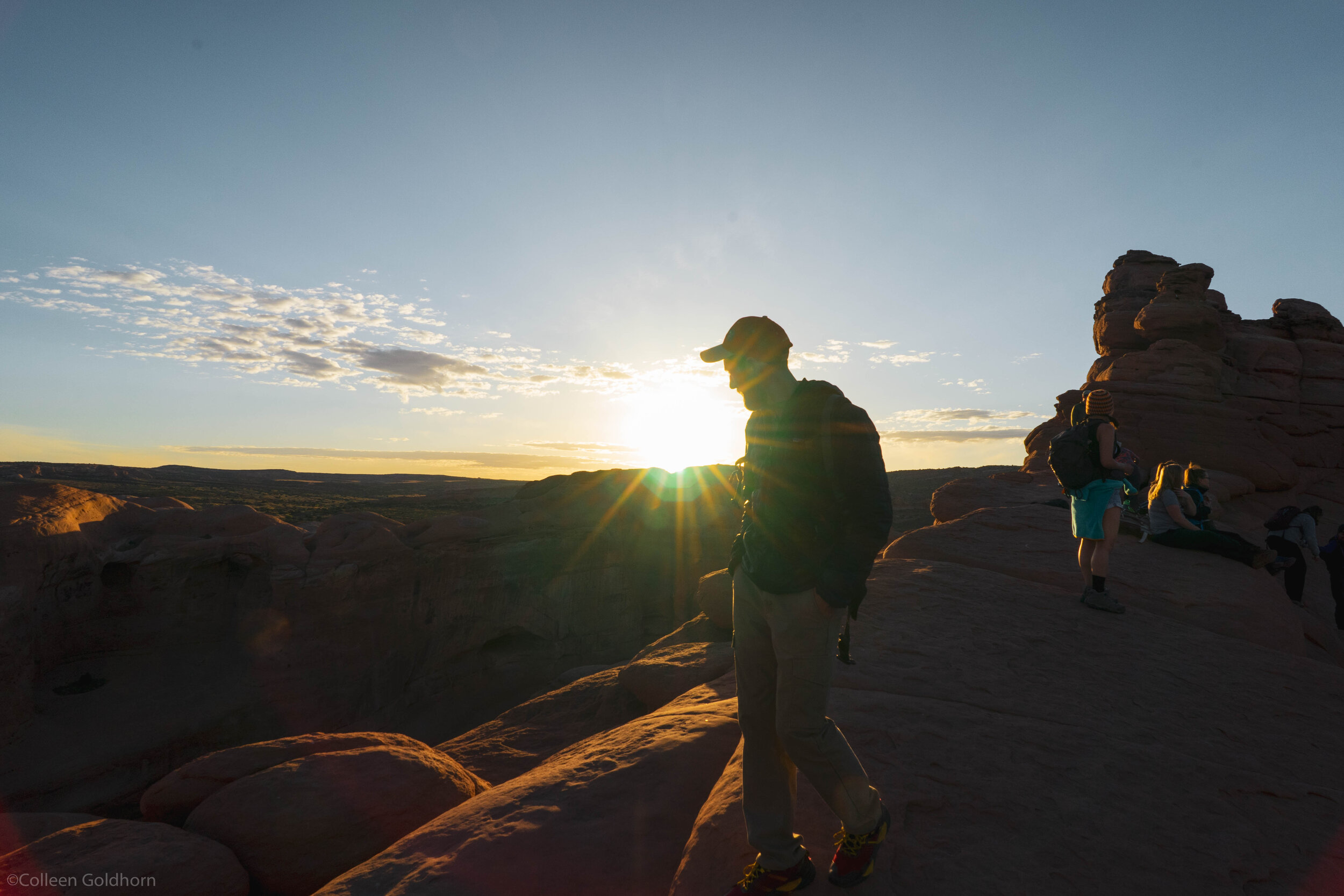Delicate Arch, Utah
Total Distance: 3 miles
Elevation Gain: 614 feet
Trail Type: Out-and-Back
Difficulty: Moderate
The Hike: There are over 2,000 arches within Arches National Park, however Delicate Arch takes the cake for being the most popular. Although not overly challenging, this hike is exposed to harsh sun and, at times, crosses narrow rock slabs with significant drops on either side. The trail also climbs almost 500 feet up a vertical slab of rock, so sturdy footwear with good traction is recommended.
Starting at the parking lot, the trail starts out gradual and slowly begins to climb up and over areas of sandstone rock. Eventually, this smooth trail dumps hikers at the base of a vertical rock slab and things begin to get interesting. If the traction on your footwear is decent, then this section should be fine – use caution if your footwear is less than ideal. After about 500ft of climbing, the trail winds around a few sandstone towers, and leads hikers onto a narrow slab of rock with a sharp drop off to the left. Take your time, and be mindful of traffic coming the opposite direction on this stretch.
After climbing over one more rock slab, you will be greeted to views of Delicate Arch and the surrounding basin. After taking in views of the arch, be sure to admire the snowcapped mountains in the distance as well as the red mesas and valleys that neighbor Delicate Arch.
There are sharp drop offs along most of the Delicate Arch area. Watch your step and use extra caution if the traction on your shoes is subpar.
On the way back to the parking lot, be sure to watch for a short side trail that leads to petroglyphs drawn on walls of rock by ancient Native Americans.
The Details: Hikers can start their trek at the Delicate Arch parking lot, which is about 13 miles north from the visitor’s center.
This trail is the most popular hike in Arches National Park, and both sunrise and sunset will be crowded. If you’re planning on hiking during the day to avoid the crowds, be sure to plan ahead. This trail offers no shade, and gets dangerously hot in the warmer months. Bring multiple liters of water, and turn around at the first sign of heat stroke or dehydration.
Gear: For this hike, we recommend bringing along either the Winter or Summer Day Hike Essentials, depending on the season.
*The information in this article is for planning purposes only. Actual trail conditions may vary depending on environmental factors. It is always advised to get the latest trail information from a park office or ranger before you begin your hike.

